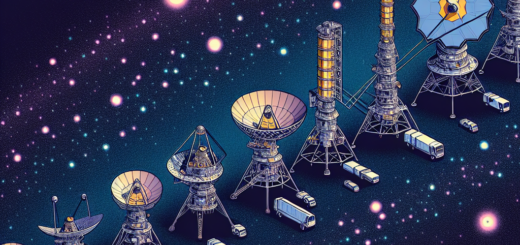The Dance of the Stars: Exploring the Beauty and Complexity of Nebulae
Nebulae are often referred to as the dance of the stars, and for good reason. These vast, beautiful clouds of gas and dust are some of the most stunning and complex structures in the universe. Nebulae are often the birthplace of stars, and their swirling, ever-changing forms provide a glimpse into the dynamic and turbulent nature of the cosmos.
One of the most famous types of nebulae is the stellar nursery, where new stars are born from the dense clouds of gas and dust. These nurseries can be incredibly large, with some spanning hundreds of light-years across. The process of star formation within these nebulae is a delicate dance of gravity, pressure, and temperature, as the gas and dust slowly coalesce into new stars.
Another type of nebula that is often seen in the night sky is the planetary nebula. Despite their name, these nebulae have nothing to do with planets. Instead, they are the remnants of stars that have reached the end of their lives and shed their outer layers into space. The stunning, intricate shapes of planetary nebulae are created by the interactions between the dying star and the surrounding interstellar medium.
Nebulae come in a variety of shapes and sizes, from the delicate filaments of the Veil Nebula to the massive, luminous clouds of the Orion Nebula. Some nebulae are so vast that they can be seen with the naked eye, while others are best viewed through powerful telescopes that can capture the intricate details of their swirling forms.
One of the most famous nebulae is the Eagle Nebula, also known as the Pillars of Creation. Located in the constellation Serpens, the Eagle Nebula is a stellar nursery where new stars are being born. The iconic pillars of gas and dust within the nebula are being sculpted by the intense radiation from nearby young stars, creating a breathtaking display of cosmic beauty.
The beauty of nebulae is not just skin deep – they also hold valuable insights into the processes that drive the evolution of galaxies and the formation of stars. By studying the composition, structure, and dynamics of nebulae, astronomers can learn more about the origins of the universe and the forces that shape it.
So the next time you look up at the night sky and see a shimmering cloud of gas and dust, take a moment to appreciate the beauty and complexity of nebulae. They are not just pretty pictures – they are windows into the vast and mysterious universe that surrounds us. And who knows, maybe the dance of the stars will inspire you to reach for the stars yourself.













